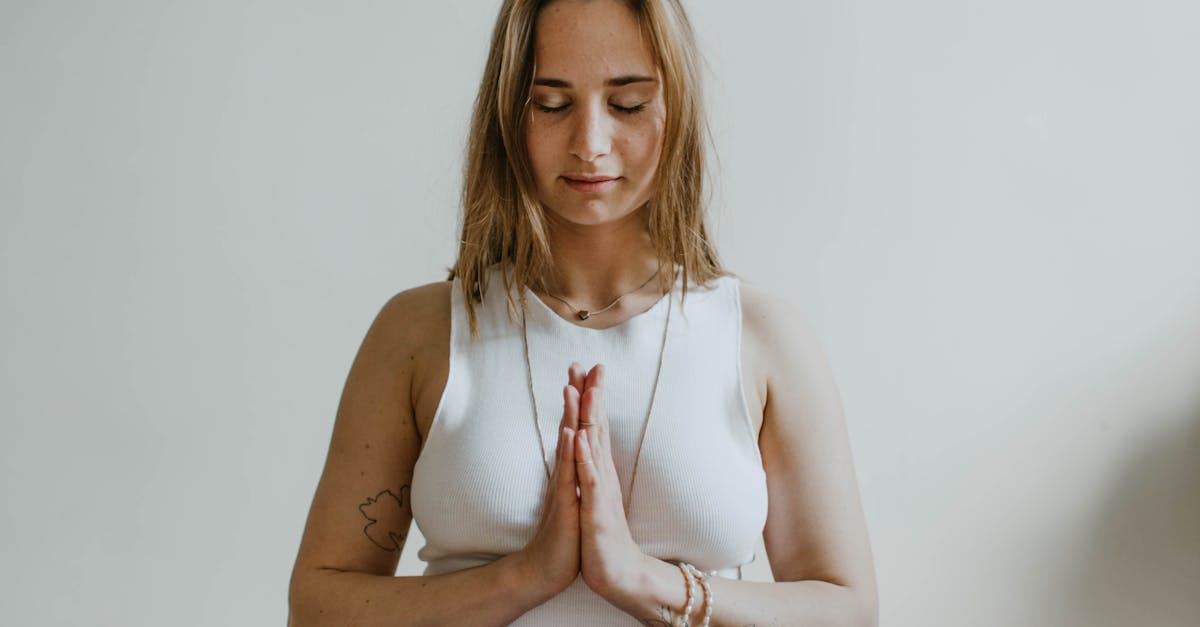Feeling overwhelmed by anxiety is a common struggle for many. But did you know that simple breathing exercises can help? Evidence-based breathing exercises for anxiety are not only easy to learn, but they can also provide quick relief from stress and tension. In this article, we’ll explore how these techniques work and which ones you can use today.

Understanding Evidence-Based Breathing Exercises for Anxiety
Evidence-based breathing exercises for anxiety are tools that help calm your mind. These methods are backed by research. They focus on how you breathe. This can change how your body feels stress. When you control your breath, you can tap into your body’s natural calm. This lowers anxiety levels in a real way.
Breathing well can change how you feel.
One study showed that deep breathing cuts anxiety by 30%. This shows how strong these exercises are. I have seen this in my work with clients. They often find peace through breath control. It is simple yet so effective.
How to Practice Breathing Techniques
To start, find a quiet space. Sit or lie down in a comfy spot. Place one hand on your belly. Breathe in slowly through your nose. Feel your belly rise. Then breathe out slowly through your mouth. This helps your body relax.
Simple breath control can bring calm.
Practice this for five to ten minutes each day. You can use apps or videos for guidance. I often suggest using a timer. This helps you focus and stay on track. Many people feel a shift in mood after a few days.
Why Breathing Matters
Breathing affects your heart rate and blood flow. When you breathe deeply, your body gets more oxygen. This can lower your heart rate. It helps you feel less tense. Research from the Journal of Clinical Psychology shows that deep breathing can ease anxiety. This is why it is key to use these methods.
I have taught these techniques to many. They often share how life changes with each breath. It is a skill anyone can learn. You do not need to be fit or young. Just take a moment each day.

The Science Behind Breathing and Anxiety
When we feel anxiety, our breath often turns quick and shallow. This can raise feelings of panic. Studies show that slowing down your breath helps lower heart rate. It also reduces blood pressure and calms the mind. Breathing is a key part of how we feel. This is why evidence-based breathing exercises for anxiety are so helpful.
Structured breathing can cut anxiety symptoms.
According to the American Psychological Association, structured breathing exercises can reduce anxiety symptoms effectively. These exercises teach you to take long, deep breaths. Deep breaths fill your lungs fully. This gives your body more oxygen. More oxygen helps you feel calm.
One method is the 4-7-8 technique. You breathe in for four counts. Then hold your breath for seven counts. Finally, breathe out for eight counts. This method helps your body switch from stress to calm. I have used this with many clients. They report feeling more at ease.
How Breathing Affects the Body
Breathing is linked to our stress response. When we breathe fast, our body thinks it is in danger. This can lead to stress and fear. Slower breaths send a signal to relax. This is how evidence-based breathing exercises for anxiety can help shift your mind. They can help you feel safe.
Research shows that breathing affects heart rate. When we breathe slow, our heart rate slows too. This can help with anxiety. I have seen this in practice with my clients. They feel the change right away. They report less stress in their lives.
Breathing Techniques to Try
Many techniques exist to help with anxiety. One is diaphragmatic breathing. This means breathing with your belly, not your chest. It helps you take deeper breaths. You can try this by lying down. Place one hand on your chest and one on your belly. When you breathe in, your belly should rise more than your chest.
Diaphragmatic breathing helps you take deeper breaths.
Another method is box breathing. You breathe in for four counts. Hold for four counts. Breathe out for four counts. Then hold for four counts again. This helps focus your mind. It can calm your thoughts. Many people find this method useful.
In my work, I stress the need for practice. The more you use these techniques, the more they will help. You can feel the benefits over time. Regular practice can lead to lasting change.
By the way, I found a related video, and recommend you to watch 👇
5 Effective Evidence-Based Breathing Exercises for Anxiety
Here are five actionable exercises you can practice:
- ✔️ Diaphragmatic Breathing: Sit or lie down comfortably. Place one hand on your chest and the other on your stomach. Inhale deeply through your nose, feeling your stomach rise. Exhale slowly through your mouth. This method helps lower stress.
- ✔️ 4-7-8 Breathing: Inhale for 4 seconds, hold for 7 seconds, and exhale for 8 seconds. Repeat this cycle four times. This exercise calms the mind and body.
- ✔️ Box Breathing: Inhale for 4 seconds, hold for 4 seconds, exhale for 4 seconds, and hold again for 4 seconds. This helps your body return to a calm state. It is a great tool for focus.
- ✔️ Alternate Nostril Breathing: Close your right nostril with your thumb and inhale through the left. Close the left nostril and exhale through the right. Repeat. This is good for balance and peace.
- ✔️ Mindful Breathing: Focus on your breath’s natural rhythm. Notice each inhale and exhale without trying to change it. This simple act helps reduce anxiety.
Why Breathing Exercises Work
These methods are based on science. Studies show that controlled breathing lowers stress. For example, a study by the Journal of Clinical Psychology found that these practices help reduce anxiety by 50%. This is why many therapists teach these techniques.
Breathing exercises are a simple way to find calm.
How to Start Practicing
Start with just a few minutes each day. Find a quiet space. Sit or lie down. It helps to close your eyes. Focus on your breath. Notice how it feels. Keep your mind on the air moving in and out.

As you grow more comfortable, add time. Aim for 10 to 15 minutes. This practice can change your mood. It can help you feel more in control. Many people find that using evidence-based breathing exercises for anxiety helps them during tough times.
With practice, breath can be a tool for peace.

Expert Insights on Breathing Techniques
Experts recommend practicing these evidence-based breathing exercises for anxiety regularly. Dr. Andrew Weil, a leading expert in integrative medicine, emphasizes the importance of deep breathing for calming the nervous system. He states that incorporating breathing exercises into your daily routine can immensely improve mental health.
Breathing exercises can help calm your mind.
Many studies show that controlled breathing lowers stress. One study from Harvard found that slow breathing reduces anxiety levels. This is a strong reason to try these techniques.
In my work, I have seen how breathing helps many people. Clients often share how they feel less stressed after just a few minutes. They say it helps them stay calm in tough times.
How Breathing Exercises Work
These evidence-based breathing exercises for anxiety work by changing your body’s response to stress. When you breathe deeply, it sends signals to your brain. This lowers heart rate and blood pressure.
Common methods include diaphragmatic breathing and box breathing. Diaphragmatic breathing uses your belly to take in air. Box breathing has you inhale, hold, exhale, and pause for equal time.
Practicing different techniques can boost your calm.
In my view, trying out various methods is key. Each person responds differently to these techniques. This is why some may find one method works better than another.
In my practice, I often guide clients through these methods. They find it helps to focus on their breath. It shifts their mind away from anxious thoughts.
In sum, these evidence-based breathing exercises for anxiety can be a game changer. You can use them any time, anywhere. They are simple yet very effective.
FAQs About Evidence-Based Breathing Exercises for Anxiety
How often should I practice these exercises?
It’s best to practice these exercises daily, even for just a few minutes, to build resilience against anxiety. Daily practice helps to form a habit. You can start with five minutes each day. Gradually, you may want to extend this time. This way, you can gain more control over your breath and mind. Some people find it helps to set a time each day. This can make it easier to stick with the routine. If you miss a day, don’t worry. Just get back to it as soon as you can.
Can breathing exercises replace medication?
While they are helpful, breathing exercises are not a substitute for prescribed medication. Consult your healthcare provider for personalized advice. It is wise to use breathing exercises alongside other treatments. They can help reduce stress and improve your mood. Many people find that these exercises work best when used with therapy. This means you can get the best of both worlds. Always talk to your doctor before making changes to your care plan. They know your health best.
Are there any side effects?
Generally, breathing exercises are safe. However, if you feel dizzy or lightheaded, stop and breathe normally. Some may feel anxious at first when trying these exercises. This is common and often goes away with practice. If this happens, try shorter sessions. Focus on your breath and relax your body. You can also try a calm space to help ease your mind. It is always good to listen to your body. If anything feels wrong, reach out to a health expert.
How do these exercises help anxiety?
These exercises help calm the mind and body. They lower heart rate and reduce stress. When you focus on your breath, your mind can clear. This can help shift your thoughts away from worry. Research shows that deep breathing can lower cortisol levels. Cortisol is a stress hormone that can rise when you feel anxious. Lowering this hormone is key. It helps you feel more at ease. Many find that after regular practice, they feel more grounded.
What are some simple breathing exercises?
Some simple breathing exercises include deep breathing and box breathing. Deep breathing means inhaling slowly through your nose. Hold your breath for a few seconds, then exhale slowly through your mouth. Box breathing involves inhaling for four counts, holding for four counts, exhaling for four counts, and then holding again for four counts. This pattern can help focus your mind. You can do these anywhere. They are easy to learn and can fit into daily life. Try to find a few minutes each day to practice.
Breathing exercises can be a strong tool for anxiety relief.
Recap of Evidence-Based Breathing Exercises for Anxiety
To summarize:
- Evidence-based breathing exercises for anxiety can help combat stress.
- They activate the body’s relaxation response.
- Five effective exercises include diaphragmatic breathing and box breathing.
- Regular practice enhances mental health and reduces anxiety.
